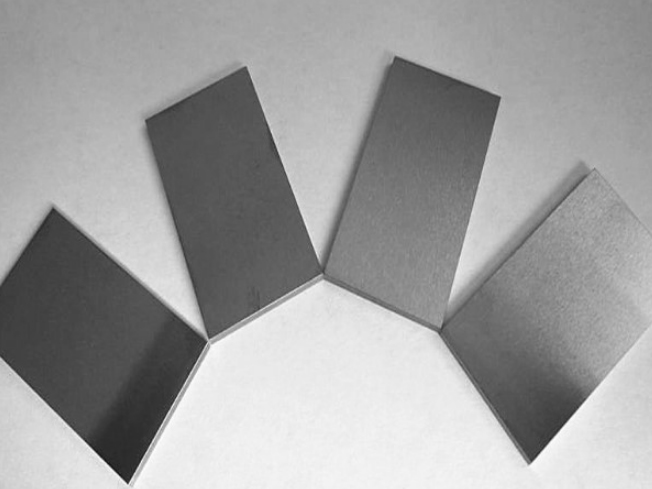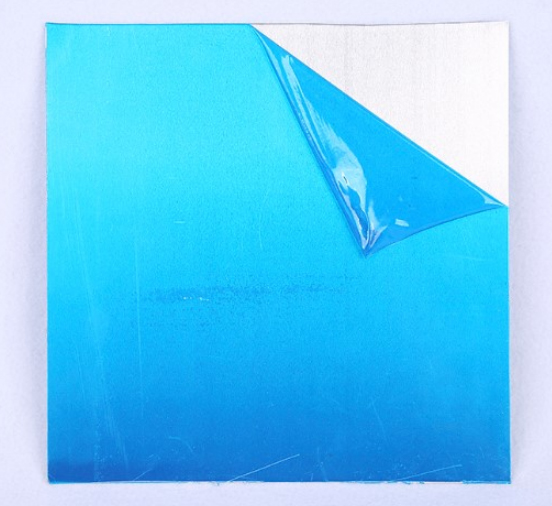99.99% Zirconium Metal
Zirconium is a shiny
gray-white metal similar to the other elements in group 4 of the
Periodic Table: titanium and hafnium.
Chemical properties
Compact zirconium
Zirconium metal is steel gray and is in pure form a soft and malleable
metal with a high melting point (2125 oC). The metal can be easily drawn
into thin threads and rolled into foils. Up to 863 ° C, the crystal
structure of zirconium metal is hexagonal densest spherical packing.
Above that temperature, the structure is less densely packed (cubic
room-centered).
The metal can dissolve significant amounts of oxygen (up to 30 atomic
percent), nitrogen and hydrogen, and small amounts of these make the
metal more brittle.
Zirconium metal is resistant to air at normal temperatures as it is
covered by a thin layer of oxide (such as aluminum). Only at
temperatures above approx. At 400 ° C, a rapidly increasing oxidation of
the metal is obtained with the formation of an oxide shell of zirconia,
ZrO2, at the same time as oxygen is dissolved in the metal. This makes
zirconium metal unsuitable as a high temperature material.
The metal is very corrosion resistant below 400 oC. It is not attacked
by water, dilute hydrochloric acid and sulfuric acid, phosphoric acid
and organic acids, lye and other. It also works well against molten
alkalis. Zirconium reacts at higher temperatures with the halogens (for
example chlorine), sulfur, carbon, silicon and others with the formation
of halides, sulphides, carbides and silicides.
In their chemical compounds, zirconium has oxidation numbers –II, 0, I,
II, III and IV. The latter is the most common and stable under normal
conditions.
Zirconium powder
In powder or as a porous sponge, the surface area is large, and the
metal is therefore easily ignited in air already at about 200 ° C,
possibly at a lower temperature by rubbing or discharging static
electricity. It must therefore be treated carefully and stored under
argon, in methanol and other. Because the powder reacts with both water
vapor and carbon dioxide, the ignited powder must be extinguished by
covering with dry sand or salt.
Zirconium has a very low impact cross-section for thermal neutrons
(0.184 children), and zirconium is therefore used as an encapsulation
material for fuel elements in nuclear power plants. The effect cross
section is much larger for hafnium (104 children), so the metal used for
fuel elements must not contain more than 0.01% hafnium. (Hafnium is used
instead in the form of rods to control the neutron flux in the nuclear
power plant.) The two elements are separated by different methods, where
extraction with organic solvents is the most common.
Manufacturing
Zirconium-containing sand is concentrated and then melted with coke in
electric arc furnaces at about 3500 ° C. This forms zirconium carbide
and zirconium carbide nitride. After crushing, these are converted by
treatment with chlorine gas to zirconium tetrachloride. .
Reduce the zirconium tetrachloride with magnesium (possibly together
with sodium) in the absence of air (oxygen and nitrogen) in the curling
process: ZrCl4 (g) + 2Mg (s) → Zr (s) + 2MgCl2 (s). The magnesium
chloride and residues of magnesium metal are removed by distillation in
vacuo and the residue becomes zirconium metal in a sponge-like form.
This is melted by arc or electron beam melting in vacuo. Metal that is
free of oxygen and nitrogen is produced by thermal decomposition of
zirconium tetraiodide, ZrI4, according to the van Arkel-de Boer method
(see Anton Eduard van Arkel).
Use
Zirconium is used as an alloy additive to many metals and alloys such as
steel, magnesium and aluminum. Magnesium – zinc – zirconium alloys are
distinguished by high mechanical strength and low weight and are used in
the aerospace industry, among other places. The metal is also used as a
deoxidizing agent, but then in the form of ferrozirconium, ferrosilicon
zirconium and other.
About 90% of the zirconium metal produced in the world is used for
capsules for fuel elements (of uranium dioxide, UO2) in nuclear
reactors, then in the form of an alloy (zircalloy). This use is due to
the good corrosion of the metal


99.99%, (4N)Zr Sheet
99.99%, (4N)Zr Foil
.
Zirconium is a shiny
gray-white metal similar to the other elements in group 4 of the
Periodic Table: titanium and hafnium.
Chemical properties
Compact zirconium
Zirconium metal is steel gray and is in pure form a soft and malleable
metal with a high melting point (2125 oC). The metal can be easily drawn
into thin threads and rolled into foils. Up to 863 ° C, the crystal
structure of zirconium metal is hexagonal densest spherical packing.
Above that temperature, the structure is less densely packed (cubic
room-centered).
The metal can dissolve significant amounts of oxygen (up to 30 atomic
percent), nitrogen and hydrogen, and small amounts of these make the
metal more brittle.
Zirconium metal is resistant to air at normal temperatures as it is
covered by a thin layer of oxide (such as aluminum). Only at
temperatures above approx. At 400 ° C, a rapidly increasing oxidation of
the metal is obtained with the formation of an oxide shell of zirconia,
ZrO2, at the same time as oxygen is dissolved in the metal. This makes
zirconium metal unsuitable as a high temperature material.
The metal is very corrosion resistant below 400 oC. It is not attacked
by water, dilute hydrochloric acid and sulfuric acid, phosphoric acid
and organic acids, lye and other. It also works well against molten
alkalis. Zirconium reacts at higher temperatures with the halogens (for
example chlorine), sulfur, carbon, silicon and others with the formation
of halides, sulphides, carbides and silicides.
In their chemical compounds, zirconium has oxidation numbers –II, 0, I,
II, III and IV. The latter is the most common and stable under normal
conditions.
Zirconium powder
In powder or as a porous sponge, the surface area is large, and the
metal is therefore easily ignited in air already at about 200 ° C,
possibly at a lower temperature by rubbing or discharging static
electricity. It must therefore be treated carefully and stored under
argon, in methanol and other. Because the powder reacts with both water
vapor and carbon dioxide, the ignited powder must be extinguished by
covering with dry sand or salt.
Zirconium has a very low impact cross-section for thermal neutrons
(0.184 children), and zirconium is therefore used as an encapsulation
material for fuel elements in nuclear power plants. The effect cross
section is much larger for hafnium (104 children), so the metal used for
fuel elements must not contain more than 0.01% hafnium. (Hafnium is used
instead in the form of rods to control the neutron flux in the nuclear
power plant.) The two elements are separated by different methods, where
extraction with organic solvents is the most common.
Manufacturing
Zirconium-containing sand is concentrated and then melted with coke in
electric arc furnaces at about 3500 ° C. This forms zirconium carbide
and zirconium carbide nitride. After crushing, these are converted by
treatment with chlorine gas to zirconium tetrachloride. .
Reduce the zirconium tetrachloride with magnesium (possibly together
with sodium) in the absence of air (oxygen and nitrogen) in the curling
process: ZrCl4 (g) + 2Mg (s) → Zr (s) + 2MgCl2 (s). The magnesium
chloride and residues of magnesium metal are removed by distillation in
vacuo and the residue becomes zirconium metal in a sponge-like form.
This is melted by arc or electron beam melting in vacuo. Metal that is
free of oxygen and nitrogen is produced by thermal decomposition of
zirconium tetraiodide, ZrI4, according to the van Arkel-de Boer method
(see Anton Eduard van Arkel).
Use
Zirconium is used as an alloy additive to many metals and alloys such as
steel, magnesium and aluminum. Magnesium – zinc – zirconium alloys are
distinguished by high mechanical strength and low weight and are used in
the aerospace industry, among other places. The metal is also used as a
deoxidizing agent, but then in the form of ferrozirconium, ferrosilicon
zirconium and other.
About 90% of the zirconium metal produced in the world is used for
capsules for fuel elements (of uranium dioxide, UO2) in nuclear
reactors, then in the form of an alloy (zircalloy). This use is due to
the good corrosion of the metal
|
|
|
|
| 99.99%, (4N)Zr Sheet | 99.99%, (4N)Zr Foil |
.
